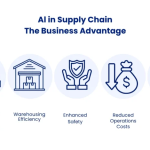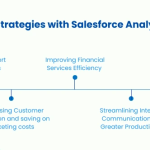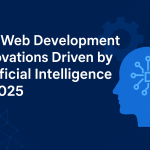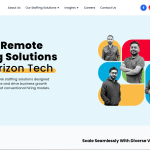A2Bookmarks USA Social Bookmarking Website
Welcome to A2Bookmarks USA, the ultimate social bookmarking website designed to enhance your online presence. Whether you're a business owner, a blogger, or simply interested in saving and sharing valuable content, A2Bookmarks offers a user-friendly platform to bookmark and showcase your website URLs or web pages. Our service is tailored to highlight USA-based social bookmarking links, ensuring they reach a broad audience. With organized categories and strategic placement, we help increase your website's visibility and drive more traffic. Join A2Bookmarks USA today and take your online visibility to the next level!

Warning: Undefined array key "host" in /home/abookmar/usa.a2bookmarks.com/wp-content/plugins/upvote-plugin/templates/content-single-story.php on line 66
How to Build a Scalable Architecture for Generative AI Solutions
Warning: Trying to access array offset on value of type bool in /home/abookmar/usa.a2bookmarks.com/wp-content/themes/upvote/functions/theme-functions/theme-functions.php on line 326
Constructing generative AI into production at scale is as much a systems challenge as a modeling challenge. Working deployments integrate strong data engineering, effective model engineering, fault-tolerant infrastructure, and organized MLOps. Here, I outline a practical playbook and architecture you can use to transition from prototype to production-grade, scalable Generative AI solutions.

1. Begin with well-defined objectives and SLAs
Before any architecture decisions, establish business objectives and service-level targets:
Anticipated throughput (requests/sec), latency (ms) goals, and concurrency.
Quality targets (perplexity, accuracy, and hallucination thresholds) and rollback conditions.
Cost budget and compliance needs (data residency, auditability).
Firm SLAs inform selections of model size, caching, and infra.
2. Core architectural components
A scalable generative AI stack would typically include five components:
- Data & Feature Layer
Centralized data lake + feature store curated with curation.
Versioned datasets and schemas; immutable raw data.
Preprocessing pipelines for tokenization, normalization, and data augmentation.
Synthetic data pipelines for low-resource tasks.
- Model Layer
Model registry with versioning (encoder/decoder checkpoints, tokenizers).
Support for several model families: LLMs, multimodal, and task-specific micro-models.
Fine-tuning, adapter, and LoRA-style low-rank update mechanisms to reduce retraining full models.
- Inference & Serving Layer
Model servers (GPU/TPU) behind autoscaling inference gateways.
Batch & real-time inference support, streaming outputs for long answers.
Token-level streaming and request pipelining to meet latency SLAs.
- Orchestration & MLOps Layer
Model & data CI/CD (auto-retrain, validation, canary rollout).
Experiment tracking, dataset provenance, and reproducible training pipelines.
Automated monitoring and alerting for model drift, latency spikes, and cost overruns.
- Governance & Security Layer
Access controls, audit logs, and explainability tooling.
Data masking, encryption-at-rest/in-transit, and privacy techniques (differential privacy, federated learning).
RAG (Retrieval-Augmented Generation) with vetted knowledge sources to limit hallucinations.
3. Design patterns for scalability
a. Modularization & Microservices
Split the capabilities into microservices: prompt preprocessor, retrieval service, model inferencer, post-processor, and response validator. All of these can be scaled separately.
b. Model Sharding & Horizontal Scaling
For extremely large models, apply model parallelism (tensor/pipeline parallelism) across nodes. For numerous smaller requests, apply horizontally scalable model replicas with a smart load balancer.
c. Multi-tier Serving (Hot/Warm/Cold)
Hot tier: tiny distilled models for low-latency, high-frequency requests.
Warm tier: medium-sized models for moderate-latency needs.
Cold tier: big/pricey models for complex, low-frequency tasks (e.g., research or batch creation).
Cost vs. latency is optimized in this tiering.
d. Retrieval-Augmented Generation (RAG)
Use a vector database + retriever to anchor outputs in curated knowledge. RAG decreases hallucinations and allows you to serve smaller models without sacrificing contextual accuracy.
e. Model Compression & Distillation
Utilize quantized or distilled models for edge and cost-sensitive inference. Utilize quantization-aware training and pruning to reduce the memory footprint without huge accuracy loss.
4. Infrastructure and cost management
Cloud vs. On-Prem vs. Hybrid
Cloud: elastic autoscaling, which is beneficial for bursty workloads.
On-prem/hybrid: needed for stringent data residency or latency-critical edge applications.
Design for portability: containerize model servers and employ infrastructure-as-code.
Cost controls
Autoscaling policies, preemptible/spot instances for non-critical tasks.
Request-level throttling and per-user quotas.
Caching of frequently occurring prompts/responses and employing less expensive distilled models for A/B testing.
5. Observability, safety, and continuous improvement
Monitoring & Metrics
Performance: latency, throughput, 95/99th percentiles.
Quality: hallucination rate, factuality checks, and user feedback signals.
Resource utilization: GPU/CPU, memory, and cost per request.
Safety & Post-processing
Response filters for toxic or unsafe content.
Factuality validators that cross-check generated facts with trusted sources.
Human-in-the-loop escalation for high-risk outputs.
Feedback loops
Instrument real user interactions to obtain labeled signals for retraining and prompt improvement. Capture data automatically while maintaining privacy and consent.
6. Operationalize with MLOps & governance
CI/CD for models
Automate unit tests, regression tests against validation suites, and staged rollouts (canary → phased → full).
Model registry & lineage
Record who trained what model, on what data, with what hyperparameters needed for audits and compliance.
Governance
Define acceptable use policies, explainability requirements, and incident response plans. Third-party audits can regularly boost stakeholder trust.
7. Practical rollout checklist (quick)
Define SLAs and KPIs.
Create a versioned data lake + feature store.
Implement model registry and experiment tracking.
Implement a multi-tier inference strategy.
Deploy vector DB and RAG pipelines.
Add monitoring, safety filters, and human escalation flows.
Auto-retrain and canary rollouts.
Enforce governance, access controls, and privacy controls.
8. Example: scaling an enterprise chatbot
Begin with a reduced LLM for low-latency front-line answers (hot tier), supported by a retriever that queries an internal knowledge base. Send lengthy queries to a warm-tier model with RAG and human-in-the-loop approval for sensitive responses. Implement feature flags to roll out new models and gather feedback constantly for periodic retraining.
Conclusion
Scalable Generative AI solutions demand systems thinking: data, models, infrastructure, and governance all count. Implement modular, multi-tiered architectures, commit to MLOps, and make safety and monitoring operational. For businesses that need a disciplined roadmap from prototype to production, working with proven providers can speed delivery and manage risk, for instance, see how CaliberFocus develops Generative AI Solutions
for regulated markets.







